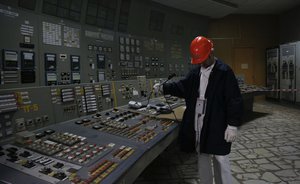Zamora Canton
Coordinates: 4°07′S 78°48′W / 4.12°S 78.80°W / -4.12; -78.80 Zamora is a canton in the Zamora-Chinchipe Province of Ecuador. It was named after Zamora city, the provincial capital and head of the canton of the same name.
History
On October 11, 1911, the Zamora Canton was created in the great former Provincia de Oriente, later in 1921 it became part of the Santiago-Zamora Province and in 1953, it permanently became part of the actual province.
General information
The canton is known for being one of the oldest and the largest canton in area of the province. It is surrounded by the remaining cantons, with exception of the Chinchipe, El Pangui and Paquisha cantons. To the west the canton borders with the Loja Province.
The Zamora Canton is the entrance from the Sierra Region towards the rest of the province by the Troncal Amazónica Highway, in a stretch of 62 kilometers from Loja city.
Political division
The canton is divided in 7 parishes, to wit:

Zamora, Michoacán
Zamora de Hidalgo, is a city in the Mexican state of Michoacán. The 2010 census population was 141,627. making it the third largest city in the state. The city is the municipal seat of Zamora Municipality, which has an area of 330.97 km² (127.79 sq mi) and includes many other smaller communities, the largest of which is Ario de Rayón (Ario Santa Mónica). The municipality's population is around 186,102, which makes it the second most populous urban area in the state.
The city of Zamora is an important economic center in the state and the most significant population center between the cities of Morelia and Guadalajara. The city is located on the Tarascan Plateau in the northwestern part of the state, at an elevation of 1,567 m (5,141 ft) above sea level. Zamora is surrounded by the fertile Tziróndaro Valley which is an important agricultural area that exports large amounts of produce to the United States.
Toponymy
The city was named after the Spanish city of Zamora because the first European settlers to the area were predominantly from the Spanish province of Castilla y León. Zamora is of Iberian origins that can be traced to the Latin "Civitas Murata" meaning "The Walled City" because it is surrounded by high hills. In 1953, the city officially added "de Hidalgo" to honor Miguel Hidalgo y Costilla that declared the village a city during the movement to independence in Mexico.
Alejandro Zamora
Alejandro Zamora Barbero (born 22 April 1984) is a Spanish footballer who plays for Mérida AD as a central defender.
Club career
Born in Madrid, played youth football with local Real Madrid, but only represented the C-team as a senior, also being loaned to Real Oviedo during his spell. In 2006 he signed with Real Betis, being all but associated with the reserves for three full seasons; on 2 December 2007, he played his first and only La Liga game with the main squad, featuring the full 90 minutes in a 0–2 home loss against Atlético Madrid which was also manager Héctor Cúper's last match on the bench.
In June 2009, Zamora signed for UD Salamanca on a two-year contract. Two years later, after suffering relegation, he joined fellow league side Recreativo de Huelva, making his competitive debut on 7 September by scoring an own goal in a 0–2 home defeat to Elche CF for the campaign's Copa del Rey; he collected only 875 minutes in the league, also being sent off against AD Alcorcón for a late tackle on Quini in the 56th minute of an eventual 1–2 loss.

List of Muppets
The Muppets are a group of comedic puppet characters originally created by Jim Henson who have appeared in multiple television series and films since the 1950s. The majority of the characters listed here originated on The Muppet Show, a television series that aired from 1976 to 1981. Since then, several more characters have been introduced in other television series, as well as theatrical films.
The first Muppet characters appeared as early as 1955, in Sam and Friends, a Washington, D.C.-based show that was on the air for six years. Kermit the Frog was one of the show's regulars, and thus was one of Henson's first Muppet creations. The characters became a household name after their appearance in the children's television program Sesame Street. Henson was initially reluctant to become involved with Sesame Street because he feared being pigeon-holed as a children's performer, but agreed to work on the show to further his social goals. The characters created for that series are now owned by the Sesame Workshop, the producers of Sesame Street, and are now considered a separate franchise.
Robin (wrestler)
Robin is a Mexican luchador enmascarado, or masked professional wrestler, who works for the Mexican professional wrestling promotion Consejo Mundial de Lucha Libre (CMLL) and portrays a tecnico ("Good guy") wrestling character. Robin's real name is not a matter of public record, as is often the case with masked wrestlers in Mexico where their private lives are kept a secret from the wrestling fans. He is a part of the extensive Alvarado wrestling family, the son of José Aarón Alvarado Nieves who wrestled as "Brazo Cibernético" and "Robin Hood", and grandson of Juan Alvarado Ibarra, better known as Shadito Cruz.
Professional wrestling career
He started his wrestling career by using the ring name Robin Hood, Jr., after his deceased father José Aarón Alvarado Nieves who wrestled as "Robin Hood" for the major part of his wrestling career. He worked primarily on the Mexican independent circuit, including some shows for the Los Perros del Mal wrestling promotion.
Robin (2010–present)
Robin (answering machine)
The Robin is the sales name for the BT Answering Machine number 202A or 202B. It was released by British Telecommunications plc (now called BT Group) in 1985 and manufactured by Team Concepts International Ltd (Hong Kong).
The answering machine had a rather serious problem in that, if it was in "answer mode" and was inactivated (perhaps by a mains power failure), when the power was restored, it would not return to "answer mode" until the user manually restored it to such using a switch on the front of the machine. Despite this, it was a vast improvement on the BT Osprey answering machine.
References
Zamora, Robin Filmography
-
2015, role: actor , character name: Taranto
-
2015, role: actor , character name: Officer Mahan
-
2015, role: actor , character name: Val
-
2014, role: actor
-
2013, role: actor , character name: James Hansen
-
2012, role: actor , character name: Mr. Whitlesby
-
2012, role: actor , character name: Luther
-
2012, role: producer
-
2012, role: director
-
2012, role: actor , character name: Marty
-
2012, role: director
-
2012, role: actor , character name: Nathan
-
2012, role: editor
-
2012, role: actor , character name: Johnny
-
2012, role: writer
-
2012, role: actor , character name: Legal Representative
-
2012, role: editor
-
2011, role: director
-
2011, role: actor , character name: Tommy
-
2011, role: actor , character name: Ray
-
2011, role: actor , character name: Hugh Elysian
-
2011, role: editor
-
2010, role: actor , character name: Eustice Brin
-
2010, role: actor , character name: Sonny Brown
-
2009, role: editor
-
2009, role: actor , character name: Bathroom Attendant
-
2009, role: actor , character name: David
-
2009, role: actor , character name: Hunter
-
2009, role: actor , character name: Captain Jeff Martinez
-
2009, role: actor
-
2009, role: actor , character name: Victor
-
2009, role: actor , character name: Jack
-
2009, role: actor , character name: Sam Castillo
-
2009, role: producer
-
2009, role: producer
-
2009, role: producer
-
2009, role: writer
-
2009, role: editor
-
2009, role: actor , character name: Gusty Winds
-
2008, role: producer
-
2008, role: actor , character name: Dr. Thompson
-
2008, role: actor , character name: Detective duncan
-
2008, role: actor , character name: Mark
-
2008, role: editor
-
2008, role: producer
-
2008, role: actor , character name: Lieutenant Robles
-
2008, role: actor , character name: Young Carlos
-
2007, role: actor , character name: Diego
-
2007, role: actor , character name: Alan Von Bruiser
-
2007, role: actor , character name: Tyrone the White Pimp

Zamora Canton
Coordinates: 4°07′S 78°48′W / 4.12°S 78.80°W / -4.12; -78.80 Zamora is a canton in the Zamora-Chinchipe Province of Ecuador. It was named after Zamora city, the provincial capital and head of the canton of the same name.
History
On October 11, 1911, the Zamora Canton was created in the great former Provincia de Oriente, later in 1921 it became part of the Santiago-Zamora Province and in 1953, it permanently became part of the actual province.
General information
The canton is known for being one of the oldest and the largest canton in area of the province. It is surrounded by the remaining cantons, with exception of the Chinchipe, El Pangui and Paquisha cantons. To the west the canton borders with the Loja Province.
The Zamora Canton is the entrance from the Sierra Region towards the rest of the province by the Troncal Amazónica Highway, in a stretch of 62 kilometers from Loja city.
Political division
The canton is divided in 7 parishes, to wit:
Latest News for: robin zamora
Municipal Court
Municipal Court Dec. 19, 2017
'One Buck': Film Review | Filmart 2017
Klowd TV gearing up to televise McDonnell v Vargas on PPV
- 1
Article Search
Most Viewed
WorldNews.com | 18 Jul 2019
Indian Express | 18 Jul 2019
The Independent | 18 Jul 2019
The Independent | 18 Jul 2019



















